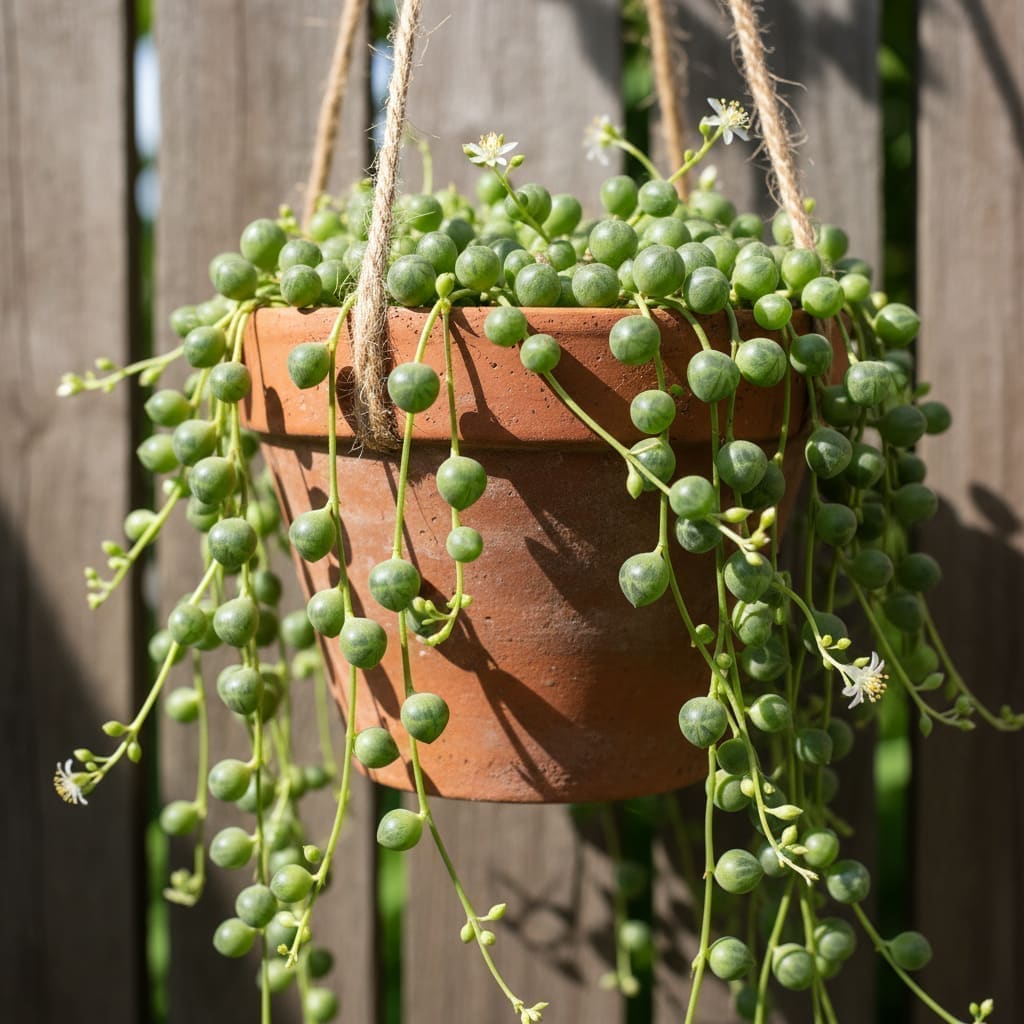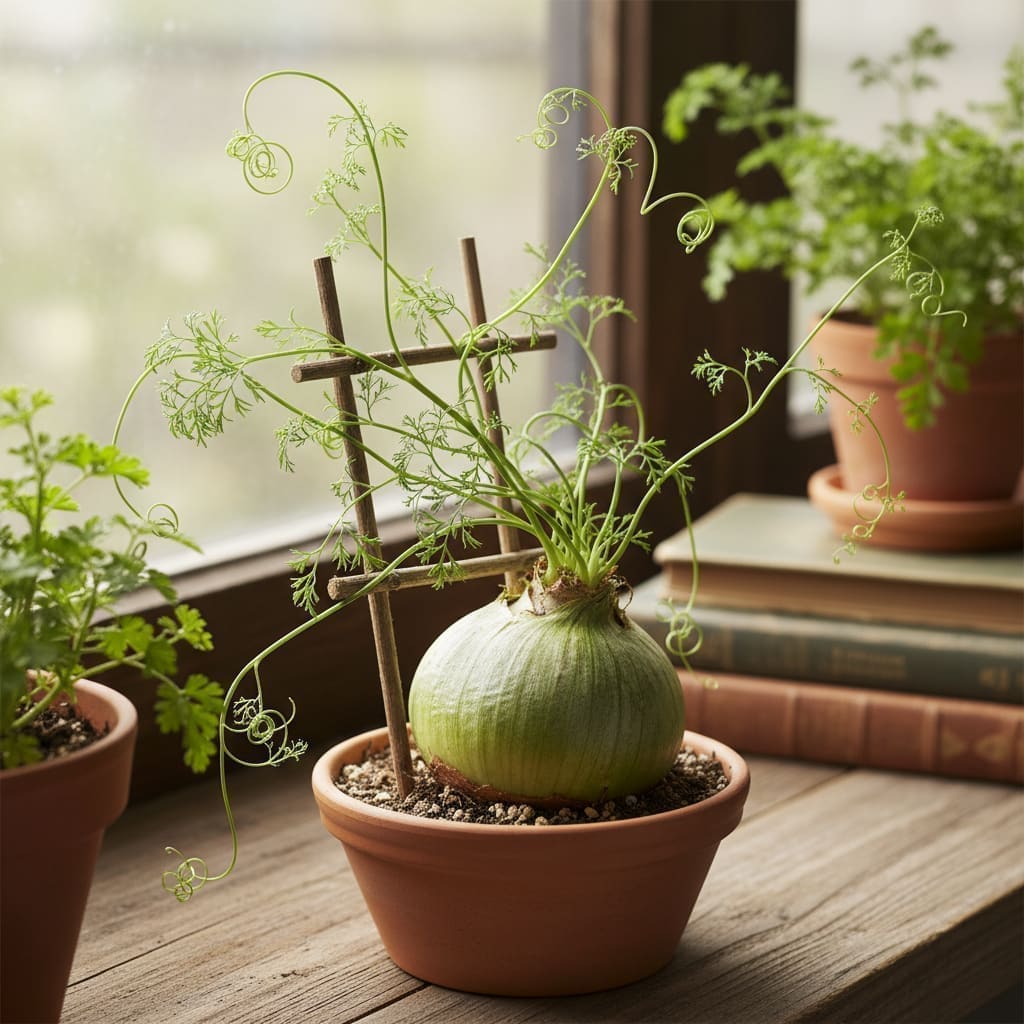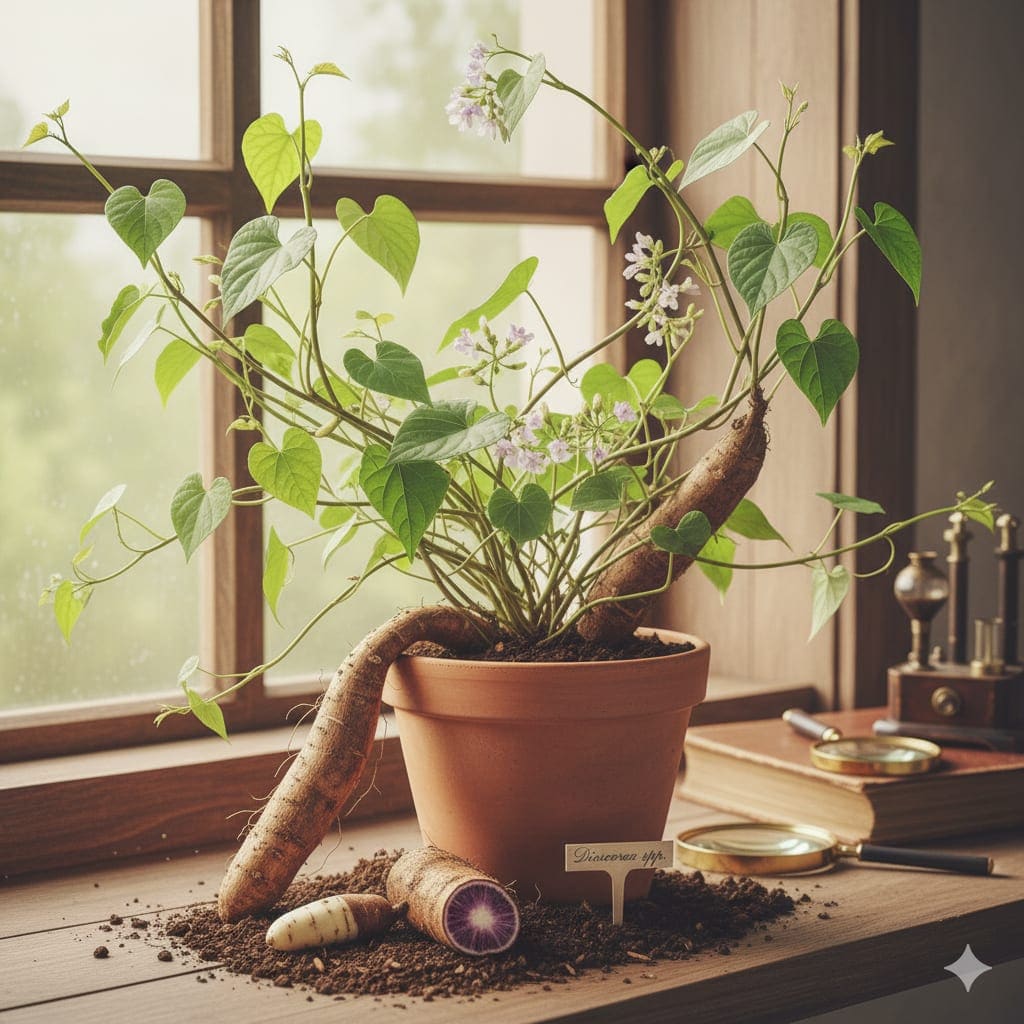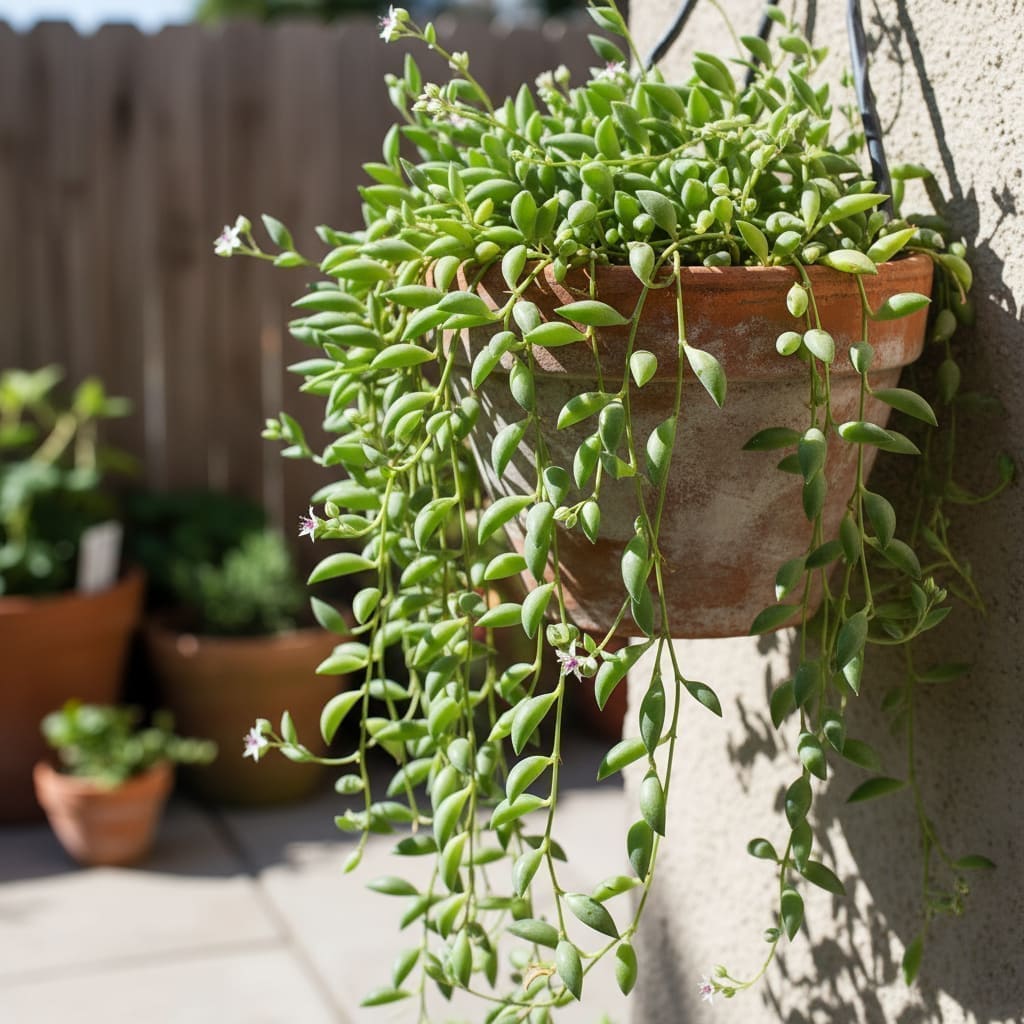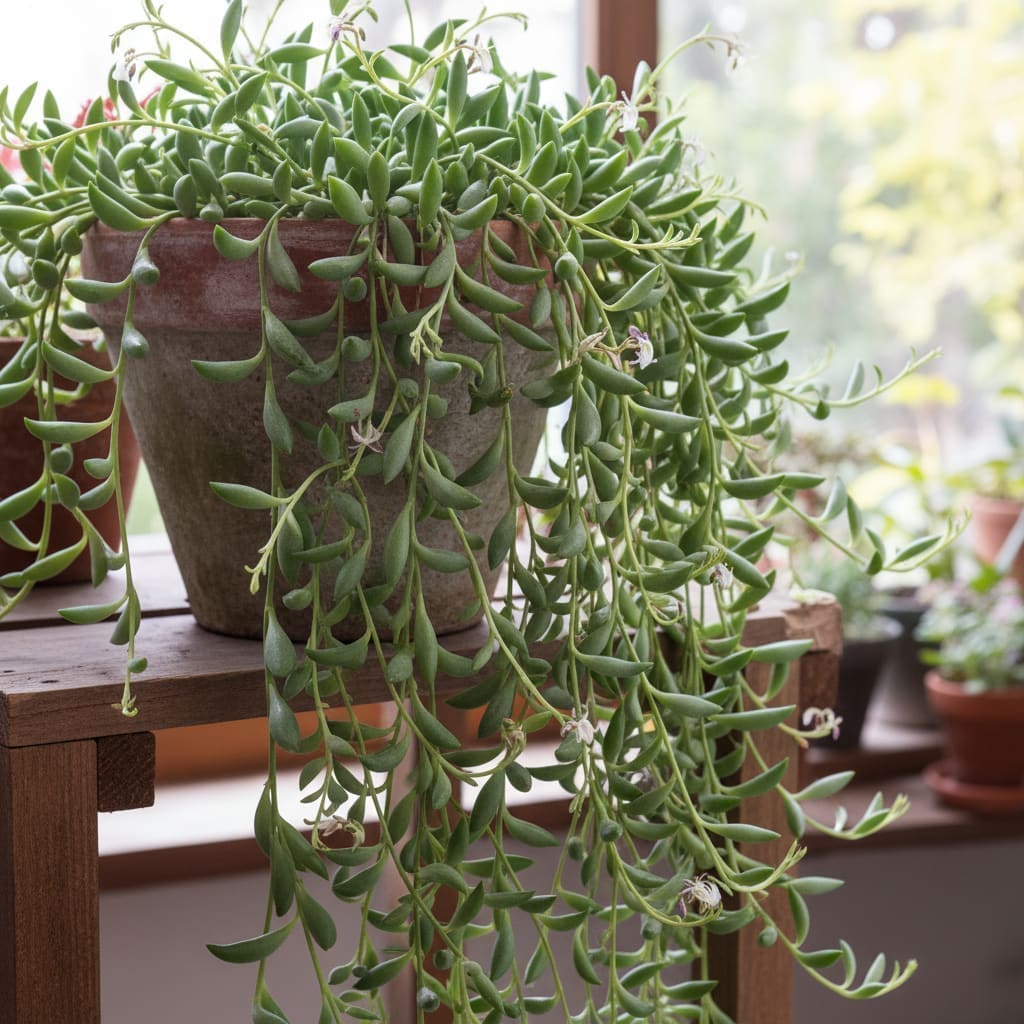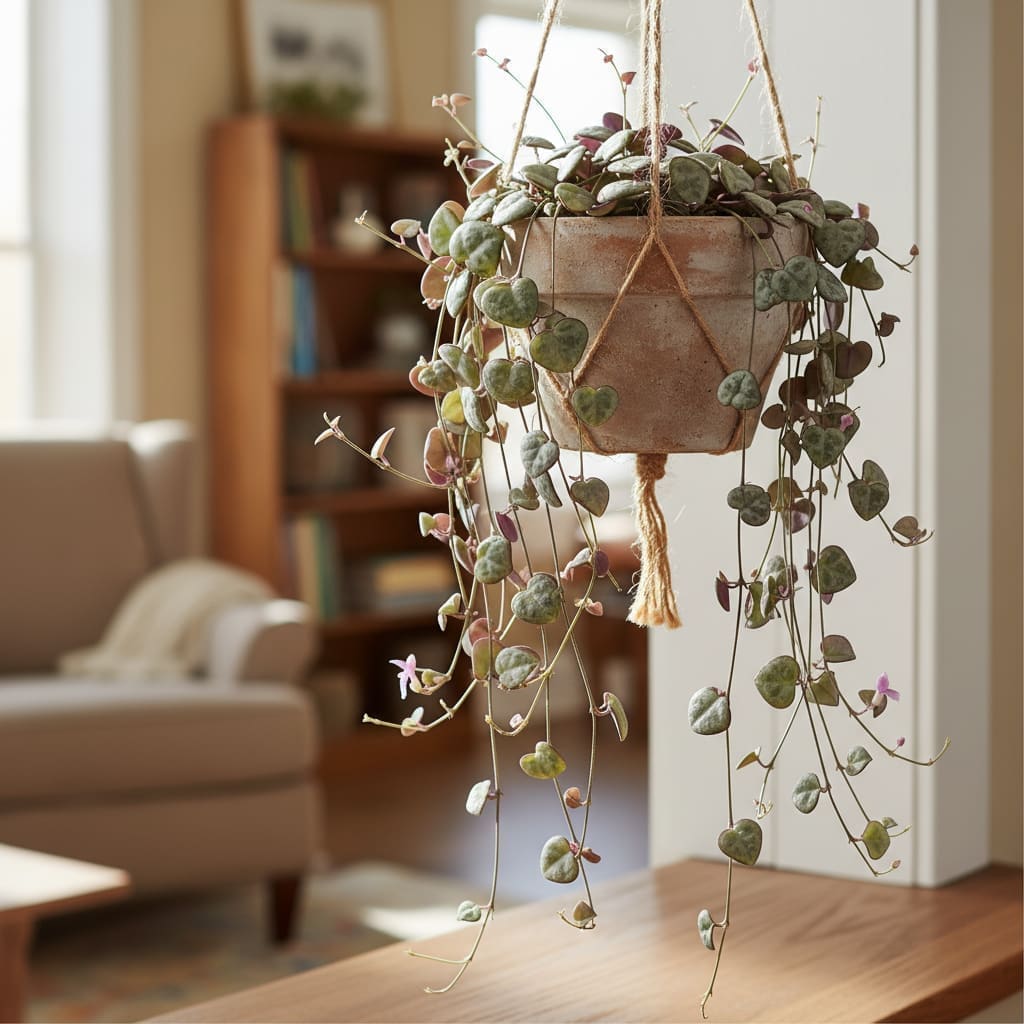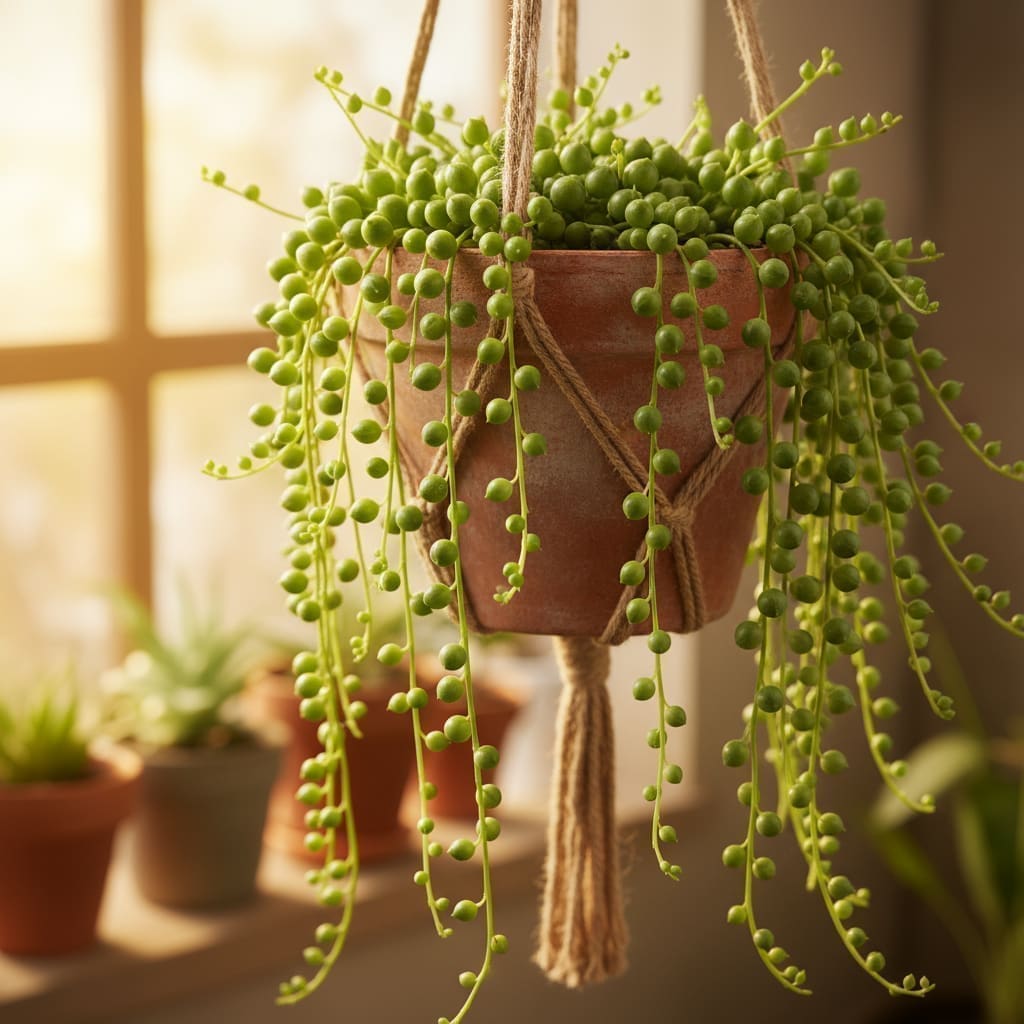Curio herreanus (String of Watermelons) Care Guide
Overview
Curio herreanus, commonly known as the String of Watermelons, is a trailing succulent prized for its distinctive, bead-like foliage patterned with translucent stripes resembling miniature watermelons. Native to the arid regions of Namibia, this plant has evolved to store water in its plump leaves, making it highly drought-tolerant and well-suited to indoor cultivation in bright, dry environments. It is closely related to the popular String of Pearls (Curio rowleyanus), but its oval-shaped leaves and unique striping set it apart.
This species is ideal for hanging baskets, shelves, or as a cascading accent in mixed succulent arrangements. With proper care, it will produce delicate, cinnamon-scented white flowers, typically in late winter or early spring.
Identification & Growth Habit
Curio herreanus is a trailing succulent with slender, green stems that can extend over 3 feet (90 cm) in length under optimal conditions. The leaves are small, ovoid, and slightly pointed at the ends, with semi-translucent longitudinal stripes that aid in photosynthesis. It grows as a groundcover in its native habitat but readily adapts to container culture, where its stems spill gracefully over the pot’s edge.
Growth is most active during spring and summer. In the right conditions, it can also be trained to climb a small trellis or moss pole, though its natural habit is trailing.
Light & Placement
Provide bright, indirect light for best growth. A position near an east- or south-facing window with filtered sunlight is ideal. Morning sun is generally safe, but protect the plant from intense afternoon rays to prevent leaf scorch. In lower light, stems may elongate excessively, and leaf markings can fade.
- Indoors: Place within 1–3 feet of a bright window, using sheer curtains if necessary.
- Outdoors: Position in a shaded patio or balcony spot with dappled light; avoid prolonged direct midday sun.
Watering & Humidity
As a succulent adapted to arid environments, Curio herreanus requires infrequent watering. Allow the soil to dry out completely between waterings. During the active growing season (spring and summer), water every 7–14 days, adjusting for temperature, light, and pot size. In winter, reduce watering to once every 3–4 weeks or less, keeping the soil barely moist to prevent root rot.
It prefers low humidity, similar to its native desert climate. Avoid placing it in humid rooms like bathrooms or kitchens, and ensure adequate air circulation.
Soil & Repotting
Use a well-draining succulent or cactus potting mix. A blend containing coarse sand, perlite, and a small proportion of organic matter works well. The pH should be slightly acidic to neutral (around 6.0–7.0). Always choose containers with drainage holes to prevent water accumulation at the roots.
Repot every 2–3 years or when the plant becomes root-bound. Handle the delicate stems gently to avoid breakage during repotting.
Fertilizing
Feed with a diluted, balanced liquid fertilizer (e.g., 10-10-10) every two weeks during the growing season. Reduce feeding to once every six weeks during the dormant winter period. Over-fertilizing can lead to weak, elongated growth, so always err on the side of underfeeding.
Pruning & Training
Pruning helps maintain a compact, lush appearance and encourages branching. Use clean, sharp scissors to trim leggy stems just above a leaf node. The cuttings can be used for propagation.
While naturally trailing, Curio herreanus can be trained to climb a small trellis or moss pole by loosely tying stems and allowing them to root along the support. This can create a unique vertical display.
Propagation
This plant propagates readily from stem cuttings. Follow these steps:
- Select a healthy stem and cut a segment 4–6 inches (10–15 cm) long, ensuring it has several leaves.
- Remove the leaves from the bottom 1–2 inches of the stem to expose nodes.
- Allow the cut end to callous over for 24–48 hours in a dry, shaded location.
- Plant the calloused end into a small pot filled with well-draining succulent mix.
- Lightly water and place in bright, indirect light.
- Keep the soil slightly moist (not wet) until new growth emerges, then transition to normal watering.
Common Problems
Pests
- Mealybugs: Look for white, cottony clusters on stems and leaves. Treat with insecticidal soap or neem oil.
- Aphids: Small green or black insects may cluster on new growth. Rinse off with water or use a mild insecticide.
- Spider mites: Fine webbing and speckled leaves indicate infestation. Increase air circulation and treat with miticide if necessary.
Diseases
- Root rot: Caused by overwatering or poor drainage. Remove affected roots, repot in fresh, dry soil, and adjust watering habits.
- Stem rot: Often follows prolonged moisture on stems. Prune out affected areas and improve airflow.
Toxicity & Pet Safety
Curio herreanus is considered toxic if ingested by pets or humans. Keep it out of reach of cats, dogs, and small children. Symptoms of ingestion may include gastrointestinal upset. Seek veterinary advice if accidental ingestion occurs.
Styling & Decor Tips
- Display in a hanging basket to showcase its trailing stems.
- Pair with other drought-tolerant plants in mixed succulent arrangements.
- Use as a living curtain in a bright window by training stems along horizontal supports.
- Place on a high shelf where foliage can cascade naturally.
Varieties & Cultivars
While Curio herreanus is less variable than some related species, minor differences in leaf size and striping may occur between plants. It is sometimes confused with Curio rowleyanus (String of Pearls) and Curio radicans (String of Bananas), so check leaf shape and markings when purchasing.
Buying Tips & Maturity
When selecting a plant, look for firm, plump leaves with clear striping and no signs of shriveling or rot. Avoid specimens with mushy stems or discolored foliage. Mature plants will have longer, fuller cascades and may flower seasonally under the right conditions.
Seasonal Care
- Spring/Summer: Active growth period; water and feed regularly, provide ample light, and prune to shape.
- Autumn: Gradually reduce watering and feeding as growth slows.
- Winter: Keep in cooler temperatures (50–60°F) with minimal watering; ensure bright light to maintain leaf markings.
FAQ
- How fast does Curio herreanus grow? Growth rate is moderate; in ideal conditions, stems can lengthen several inches per season.
- Can it grow in low light? It will survive in lower light but may become leggy and lose leaf markings. Bright, indirect light is best.
- When does it flower? Typically in late winter to early spring, producing small, white, cinnamon-scented blooms.
- Can I grow it outdoors year-round? Only in frost-free climates; otherwise, bring indoors when temperatures approach freezing.
- Why are my leaves shriveling? This can result from underwatering or root damage from overwatering; check soil moisture and root health.
Fun fact: The String of Watermelons' bead-like leaves act as miniature reservoirs, an adaptation to its native desert habitat that helps minimize water loss while storing moisture for dry periods.
